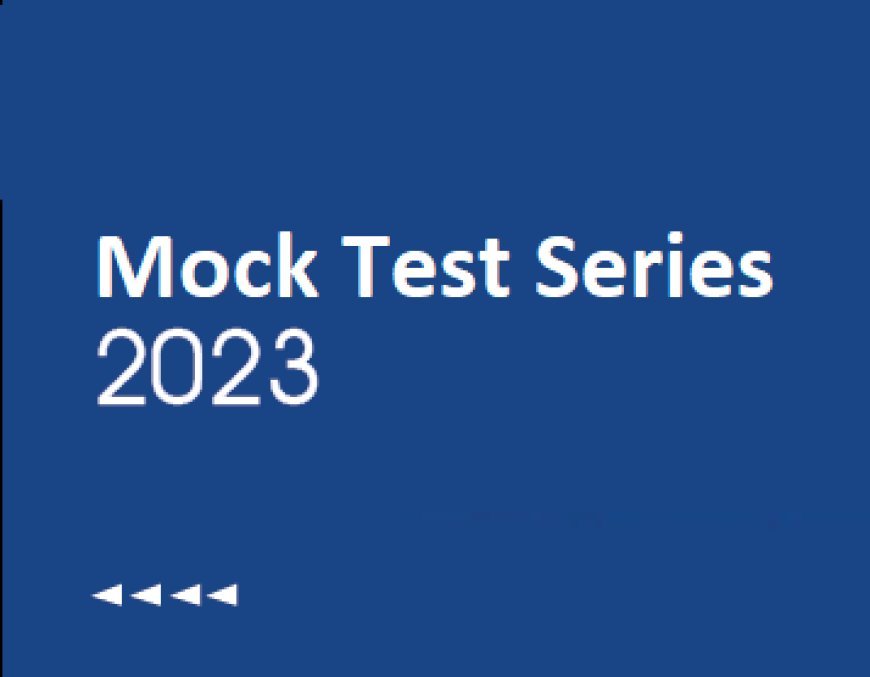AAO Exam-Quantitative Aptitude (Mock Test)
AAO Exam-Quantitative Aptitude (Mock Test)

1. A series is given, with one term missing. Choose the correct option from the given ones below that will complete the series
12, 6, 6, 9, 18, 45, ?
-
115
-
130
-
125
-
144
The pattern of the given series is:
⇒ 12 × 0.5 = 6
⇒ 6 × 1 = 6
⇒ 6 × 1.5 = 9
⇒ 9 × 2 = 18
⇒ 18 × 2.5 = 45
⇒ 45 × 3 =135
∴ The missing number in the series is 135.
2. What should come in place of the question mark '?' in the following number series?
41, 46, 53, 64, ? , 94
-
65
-
48
-
54
-
72
Calculation:
The series follows the following pattern:
⇒ 41 + 5 = 46
⇒ 46 + 7 = 53
⇒ 53 + 11 = 64
⇒ 64 + 13 = 77
⇒ 77 + 17 = 94 ∴ The missing term in the series is 77.
3. What will come in place of the question mark ‘?’ in the following question?
5, 6, 13, 40, 161, ?
-
987
-
876
-
888
-
654
4. What approximate value should come in place of the question mark (?) in the following question?
220.89 + 2.123 + 205.96 = 1.99 × ? + 214.98
-
90
-
100
-
120
-
80
Follow BODMAS rule to solve this question, as per the order given below.
Step - 1: Parts of an equation enclosed in 'Brackets' must be solved first, and following BODMAS rule in the bracket -
Step - 2: Any mathematical 'Of' or 'Exponent' must be solved next.
Step - 3: Next, the parts of the equation that contain 'Division' and 'Multiplication' are calculated.
Step - 4: Last but not the least, the parts of the equation that contain 'Addition' and 'Subtraction' should be calculated.
Since, we need to find out the approximate value, we can write these values to their nearest integers.
Given expression is
220.89 + 2.123 + 205.96 = 1.99 × ? + 214.98
⇒ 221 + 23 + 206 = 2 × ? + 215
⇒ 221 + 8 + 206 = 2 × ? + 215
⇒ 435 = 2 × ? + 215
⇒ 220 = 2 × ?
⇒ ? = 110
5. What approximate value should come in the place of question mark (?) in the following question?
47.99% of 749.99 + 24.98 – 9.99 × 18.18 = ?
-
185
-
195
-
215
-
225
Follow BODMAS rule to solve this question, as per the order given below.
Step - 1: Parts of an equation enclosed in 'Brackets' must be solved first, and following BODMAS rule in the bracket -
Step - 2: Any mathematical 'Of' or 'Exponent' must be solved next.
Step - 3: Next, the parts of the equation that contain 'Division' and 'Multiplication' are calculated.
Step - 4: Last but not the least, the parts of the equation that contain 'Addition' and 'Subtraction' should be calculated.
Since, we need to find out the approximate value, we can write these values to their nearest integers.
Given expression is
47.99% of 749.99 + 24.98 – 9.99 × 18.18 = ?
⇒ 48% of 750 + 25 – 10 × 18 = ?
⇒ 360 + 25 – 10 × 18 = ?
⇒ 360 + 25 – 180 = ?
⇒ 385 – 180 = ?
∴ ? = 205
6. What approximate value should come in the place of question mark (?) in the following question?
49.9% of 499.9 × 19.9% of 99.9 ÷ ? = 49.9% of 1999.9
-
9
-
2
-
14
-
18
Follow the BODMAS rule to solve this question, as per the order given below.
Step - 1: Parts of an equation enclosed in 'Brackets' must be solved first, and following BODMAS rule in the bracket -
Step - 2: Any mathematical 'Of' or 'Exponent' must be solved next.
Step - 3: Next, the parts of the equation that contain 'Division' and 'Multiplication' are calculated.
Step - 4: Last but not the least, the parts of the equation that contain 'Addition' and 'Subtraction' should be calculated.
Since we need to find out the approximate value, we can write these values to their nearest integers.
Given Expression.
49.9% of 499.9 × 19.9% of 99.9 ÷ ? = 49.9% of 1999.9
⇒ 50% of 500 × 20% of 100 ÷ ? = 50% of 2000
⇒ 250 × 20 ÷ ? = 1000
⇒ ? = 5
7. Direction: Study the table carefully and answer the following questions.
The following table shows the total population in 6 different cities and the percentage of females in them.
|
Name of the City |
Total number of Population |
Percentage of female |
|
A |
32000 |
50% |
|
B |
64000 |
52% |
|
C |
48000 |
35% |
|
D |
50000 |
60% |
|
E |
40000 |
40% |
|
F |
45000 |
45% |
-
30%
-
45%
-
66.66%
-
35%
 Alternate Method
Alternate Method
Given:
|
Name of the City |
Total number of Population |
Percentage of female |
|
A |
32000 |
50% |
|
E |
40000 |
40% |
Formula Used:
Decreased percentage = {(Decreased value)/(Base value)} × 100
Calculation:
The number of females in city A = 50% of 32000
⇒ (50/100) × 32000
⇒ 32000/2
⇒ 16000
The percentage of males in city E = (100 - 40)%
⇒ 60%
Total number of males in city E = 60% of 40000
⇒ (60/100) × 40000
⇒ 60 × 400
⇒ 24000
The required decreased value = 24000 - 16000
⇒ 8000
The required decreased percentage = (8000/24000) × 100
⇒ 100/3
⇒ 33.33%
∴ The number of females in city A is approximately 33.33% less than the number of males in city E.
8. Direction: Study the table carefully and answer the following questions.
The following table shows the total population in 6 different cities and the percentage of females in them.
|
Name of the City |
Total number of Population |
Percentage of female |
|
A |
32000 |
50% |
|
B |
64000 |
52% |
|
C |
48000 |
35% |
|
D |
50000 |
60% |
|
E |
40000 |
40% |
|
F |
45000 |
45% |
-
16530
-
17000
-
17500
-
18400
Given:
|
Name of the City |
Total number of Population |
Percentage of female |
|
A |
32000 |
50% |
|
B |
64000 |
52% |
|
D |
50000 |
60% |
|
F |
45000 |
45% |
Calculation:
The percentage of males in city A = (100 - 50)%
⇒ 50%
Total number of males in city A = 50% of 32000
⇒ (50/100) × 32000
⇒ 32000/2
⇒ 16000
The percentage of males in city D = (100 - 60)%
⇒ 40%
Total number of males in city D = 40% of 50000
⇒ (40/100) × 50000
⇒ 40 × 500
⇒ 20000
Total number of males in city A and D together = 16000 + 20000
⇒ 36000
Total number of females in city B = 52% of 64000
⇒ (52/100) × 64000
⇒ 52 × 640
⇒ 33280
Total number of females in city F = 45% of 45000
⇒ (45/100) × 45000
⇒ 45 × 450
⇒ 20250
Total number of females in city B and F together = 33280 + 20250
⇒ 53530
The required difference = 53530 - 36000
⇒ 17530
∴ The difference between the number of males in cities A and D together and the number of females in cities B and F together will be 17530.
9. Direction: Study the table carefully and answer the following questions.
The following table shows the total population in 6 different cities and the percentage of females in them.
|
Name of the City |
Total number of Population |
Percentage of female |
|
A |
32000 |
50% |
|
B |
64000 |
52% |
|
C |
48000 |
35% |
|
D |
50000 |
60% |
|
E |
40000 |
40% |
|
F |
45000 |
45% |
-
19000
-
19725
-
28950
-
26000

Since population are in thousands we can ignore last three zeros to simplify the calculation
⇒ Average = (64 × (100 - 52)% + 40 × (100 - 40)% + 45 × (100 - 45)%)/3
⇒ Average = (64 × 48% + 40 × 60% + 45 × 55%)/3
⇒ Average = (64 × 16% + 40 × 20% + 15 × 55%)
⇒ Average = (64 × 16 + 40 × 20 + 15 × 55)/100 (%→ 1/100)
⇒ Average = (1024 + 800 + 825)/100
⇒ Average = (2649)/100
Since we ignored zeros at last we need to multiply with 3 zeros
∴ Required Average = 26490
 Alternate Method
Alternate Method
Given:
|
Name of the City |
Total number of Population |
Percentage of female |
|
B |
64000 |
52% |
|
E |
40000 |
40% |
|
F |
45000 |
45% |
Calculation:
The percentage of males in city B = (100 - 52)%
⇒ 48%
Total number of males in city B = 48% of 64000
⇒ (48/100) × 64000
⇒ 48 × 640
⇒ 30720
The percentage of males in city E = (100 - 40)%
⇒ 60%
Total number of males in city E = 60% of 40000
⇒ (60/100) × 40000
⇒ 60 × 400
⇒ 24000
The percentage of males in city F = (100 - 45)%
⇒ 55%
Total number of males in city F = 55% of 45000
⇒ (55/100) × 45000
⇒ 55 × 450
⇒ 24750
Total number of male in cities B, E and F together = 30720 + 24000 + 24750
⇒ 79470
The required average = 79470/3
⇒ 26490
∴ The average number of males in cities B, E, and F together will be 26490.
-
352 cm
-
164 cm
-
188 cm
-
196 cm
(Radius of circle)2 = 3850 × (1/ π)
Radius of a circle = 35 cm
Breadth of a rectangle = 35 – 13 = 22 cm
Circumference of a circle = 2π × 35 = 220 cm
Perimeter of a rectangle = 2(Length + Breadth)
Length of a rectangle = (220/2) – 22 = 88 cm
Area of square = length × breadth = 88 × 22 = 1936 sq.cm
Side of a square = (1936)1/2
Side of a square = 44 cm Perimeter of a square = 4 × 44 = 176 cm
-
13 years
-
12 years
-
8 years
-
7 years
Given:
Total age of 12 students = 120 years
Total age of two students who left class = 8 × 2 = 16 years
Total age of 5 students who joined class = 5 × 11 = 55 years
Total age of (12 - 2 + 5 = 15) students of a class = 120 - 16 + 55 = 159 years
∴ Required average = 159/15 = 10.6 years ≈ 10 years
-
128 km
-
768 km
-
960 km
-
458 km
GIVEN :
Speed of goods train = 54 kmph
Speed of passenger train = 63 kmph
Distance covered by goods trains in 10 hours = 54 × 10 = 540 km
CALCULATION :
Let the distance between the P and Q be M km.
Remaining distance to cover for goods trains = M - 540
Relative speed = 54 + 63 = 117 kmph
Two trains meet = 252 km from Q
Then,
⇒ (M - 540)/117 × 63 = 252
⇒ M - 540 = 468
⇒ M = 1008 The distance between the P and Q is 1008 km.
13. In the given question, two equations numbered l and II are given. Solve both the equations and mark the appropriate answer.
I. 2x2 - 39x + 189 = 0 II. y2 - 16y + 63 = 0
-
x > y
-
x < y
-
x ≤ y
-
x = y or relationship between x and y cannot be established.
Calculation∶
I. 2x2 - 39x + 189 = 0
⇒ 2x2 - 18x - 21x + 189 = 0
⇒ 2x(x - 9) - 21(x - 9) = 0
⇒ (x - 9) (2x - 21) = 0
⇒ x = 9, 21/2
II. y2 - 16y + 63 = 0
⇒ y2 - 7y - 9y + 63 = 0
⇒ y(y - 7) - 9(y - 7) = 0
⇒ (y - 7) (y - 9) = 0
⇒ y = 7, 9
|
Value of x |
Value of y |
Relation |
|
9 |
7 |
x > y |
|
9 |
9 |
x = y |
|
21/2 |
7 |
x > y |
|
21/2 |
9 |
x > y |
∴ x ≥ y
14. In the given question, two equations numbered l and II are given. Solve both the equations and mark the appropriate answer
I. 9x2 - 3x - 2 = 0
II. y2 - 8y + 16 = 0
-
x > y
-
x ≤ y
-
x ≥ y
-
x = y or the relationship between x and y cannot be established.
Given:
I) 9x2 - 3x - 2 = 0
II) y2 - 8y + 16 = 0
Concept used:
Using quadratic equation
Calculation:
From I,
9x2 - 3x - 2 = 0
⇒ 9x2 - 6x + 3x - 2 = 0
⇒ 3x(3x - 2) + 1(3x - 2) = 0
⇒ (3x - 2) (3x + 1) = 0
⇒ x = 2/3, - 1/3
From II,
y2 - 8y + 16 = 0
⇒ y2 - 4y - 4y + 16 = 0
⇒ y(y - 4) - 4(y - 4) = 0
⇒ (y - 4) (y - 4) = 0
⇒ y = 4, 4
Comparison between x and y (via Tabulation):
|
Value of x |
Value of y |
Relation |
|
2/3 |
4 |
x < y |
|
2/3 |
4 |
x < y |
|
- 1/3 |
4 |
x < y |
|
- 1/3 |
4 |
x < y |
∴ x < y.
15. In the given question, two equations are numbered l and II as given. Solve both the equations and mark the appropriate answer.
I. x2 + 20x + 64 = 0 II. y2 + 27y + 110 = 0
-
x > y
-
x < y
-
x ≥ y
-
x ≤ y
Calculation∶
I. x2 + 20x + 64 = 0
⇒ x2 + 4x + 16x + 64 = 0
⇒ x(x + 4) + 16(x + 4) = 0
⇒ (x + 16)(x + 4) = 0
⇒ x = -16, -4
II. y2 + 27y + 110 = 0
⇒ y2 + 5y + 22y + 110 = 0
⇒ y(y + 5) + 22(y + 5) = 0
⇒ (y + 5)(y + 22) = 0
⇒ y = -5, -22
|
Value of x |
Value of y |
Relation |
|
-16 |
-22 |
x > y |
|
-16 |
-5 |
x < y |
|
-4 |
-22 |
x > y |
|
-4 |
-5 |
x > y |
∴ Relationship between x and y cannot be established
16. Direction: Read the following information carefully and answer the questions that follow.
A survey is conducted on 540 people of society about their choice on Red and Green colors. The people have to select only Red or only Green or both as their choice. The number of males and females is in the ratio 5 ∶ 4 and 35% of male like only Red color. 25% of people select both colors as their choice. The number of males who selects only Green is double to that of who selects both as their choice. 30% of female like only Green color.
-
120
-
105
-
110
-
95
17. Direction: Read the following information carefully and answer the questions that follow.
A survey is conducted on 540 people of society about their choice on Red and Green colors. The people have to select only Red or only Green or both as their choice. The number of males and females is in the ratio 5 ∶ 4 and 35% of male like only Red color. 25% of people select both colors as their choice. The number of males who selects only Green is double to that of who selects both as their choice. 30% of female like only Green color.
-
100%
-
103%
-
105%
-
110%
18. Direction: Read the following information carefully and answer the questions that follow.
A survey is conducted on 540 people of society about their choice on Red and Green colors. The people have to select only Red or only Green or both as their choice. The number of males and females is in the ratio 5 ∶ 4 and 35% of male like only Red color. 25% of people select both colors as their choice. The number of males who selects only Green is double to that of who selects both as their choice. 30% of female like only Green color.
-
10
-
15
-
8
-
7
19. Direction: Read the following information carefully and answer the questions that follow.
A survey is conducted on 540 people of society about their choice on Red and Green colors. The people have to select only Red or only Green or both as their choice. The number of males and females is in the ratio 5 ∶ 4 and 35% of male like only Red color. 25% of people select both colors as their choice. The number of males who selects only Green is double to that of who selects both as their choice. 30% of female like only Green color.
-
48%
-
42%
-
52%
-
56%
20. Direction: Read the following information carefully and answer the questions that follow.
A survey is conducted on 540 people of society about their choice on Red and Green colors. The people have to select only Red or only Green or both as their choice. The number of males and females is in the ratio 5 ∶ 4 and 35% of male like only Red color. 25% of people select both colors as their choice. The number of males who selects only Green is double to that of who selects both as their choice. 30% of female like only Green color.
-
120
-
108
-
102
-
116





